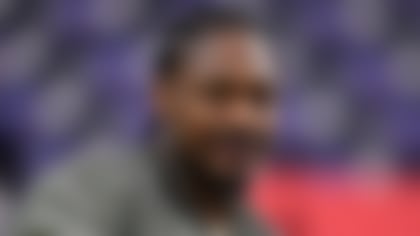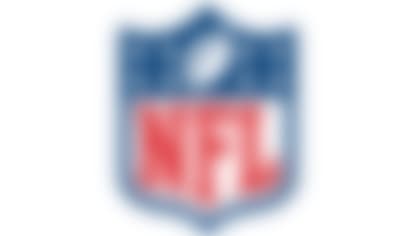The discussions around running backs and the NFL draft typically revolve around the devaluation of the position. But the free-agent contracts signed by Houston Texans star Arian Foster (five years, $43.5 million) and Seattle Seahawks favorite Marshawn Lynch (four years, $31 million) show teams still value strong backs who bring balance to the offense.
Reuter: Second-best RB prospect?
Trent Richardson is this draft's top-rated back, but who's next? Chad Reuter scouts three second-tier RB prospects. **More ...**
The unpredictability of the position is also evident, given those two examples: Foster was an undrafted free agent out of Tennessee, while Lynch was the 12th overall pick in 2007. Three of the top four rushers in the NFL in 2011 were second-round picks, and third-ranked Michael Turner was taken in the fifth round.
But the thought that a team can just find a running back later in the draft ignores the fact that for every ball carrier picked in Rounds 2-7 who becomes a starter, there are plenty of others who get injured or fail to take advantage of opportunities.
So finding an impact rusher isn't simply about waiting until the middle stages of a draft -- it truly hinges on successfully evaluating which back in any round will earn big carries at the next level. Let's take a look at which running backs in the different tiers of this year's draft I think will have the most success at the pro level:
Thursday stars
Impact running backs selected in the first round are expected to be game-changers capable of scoring any time they get into the open field, getting the tough first down and bulling into the end zone.
Trent Richardson, Alabama: It's been clear that Richardson would be a coveted prospect since he was a consensus high school All-American in Pensacola, Fla. His tough running and sub-4.5 speed make him the strong combination teams want in a bell-cow back. He is also adept at pass protection and effective as a receiver out of the backfield, which makes him a true three-down threat.
Doug Martin, Boise State: There's a chance no other back gets picked in the first round this year, but Martin's the top dog if team needs require such a move. Though he is not the fastest of all the second-tier prospects, the former defensive back and special teams ace possesses the burst, balance and sturdy compact build needed to succeed as a starting back.
Friday night lights
Impact second- and third-round backs might not have the full package, but should eclipse 1,000 rushing yards and contribute in the passing game regularly.
David Wilson, Virginia Tech:Stuck behind Ryan Williams and Darren Evans on Tech's running back depth chart his first two years in Blacksburg, Wilson exploded as a junior to become the ACC Player of the Year. The slasher glides through holes inside, showing a bit more strength than you'd expect from a former track star with sub-4.5 speed. If he can tighten up his ball security (seven fumbles in 2011), Wilson can become a LeSean McCoy-type threat.
Robert Turbin, Utah State: A bruising back (5-10, 220) with 4.5 speed, Turbin scored twice against Auburn in Utah State's near upset in the 2011 season opener. He would be a great fit as a third-round pick in a zone scheme, using his lean and explosiveness out of the cut to attack second-level defenders.
Saturday sleepers
Impact running backs from Rounds 4-7 are consistent contributors in a rotation who can step up to become starters in their first or second season.
Casserly: Two-round mock draft
Charley Casserly projects the first two rounds of the 2012 NFL Draft, with no quarterbacks coming off the board in Round 2. **More ...**
Chris Polk, Washington: The Huskies rode Polk 799 times over the past three years, including 293 totes (in addition to his 31 receptions) last fall. But multiple shoulder surgeries early in his college career bring up medical red flags. Teams utilizing a power scheme will take advantage of others' concerns about those surgeries and his physical running style to find a great value on Saturday.
Cyrus Gray, Texas A&M:The speedy Gray eclipsed 1,000 yards and rushed for 12 touchdowns in each of the past two seasons, despite sharing carries with talented rising senior Christine Michael and suffering a fractured shoulder in November. He also used his sub-4.5 speed to score twice on kick returns early in his career. If Gray can stay healthy, he can not only contribute on special teams but also as a complementary back capable of breaking off big runs in big spots.
Terrance Ganaway, Baylor: Quarterback Robert Griffin III deservingly got all the headlines for a Heisman Trophy-winning season, but Ganaway's strength and surprising burst in the open field helped him finish 10th in the nation in rushing (1,547 yards). He also ran into the end zone 21 times last season. Though not exceptional in his long speed, Griffin flashes quick enough feet to find a hole and has the frame to make and take hits in the NFL in the same way LeGarrette Blount did while accumulating 1,788 yards over his first two seasons with Tampa Bay.
Follow Chad Reuter on Twitter @ChadReuter




